My first trip to Robert and Norma's cottage on Basshaunt Lake had whetted my appetite (photographically speaking) for the area's Odonata (dragonflies and damselflies), and on my return I was eager to see more. Our first morning at the cottage (June 25, 2011), though, was cool and drizzly, and not a dragonfly did I see - until our friend Mark (he and his wife Shirley were visiting Robert and Norma too) called me down to the dock, where a beautiful golden dragonfly stood freshly emerged on the timbers. Our grandson Ryan was interested too (that's Eileen's son Bryan behind him).
The dragonfly's wings were still sealed together over its back. Only a few inches away the split remnants of its nymphal exoskeleton, or exuvium, clung to the edge of the dock.
After watching it for a while we got tired of warning people not to step on it as they came and went, so Mark carefully transferred it to a log by the shore...
...where, to our surprise, we found two other nymphal exuviae of, presumably, the same species, hanging side by side.
...where, to our surprise, we found two other nymphal exuviae of, presumably, the same species, hanging side by side.
After about twenty minutes its wings suddenly snapped open, and by the time we left it to its own devices a shadowy colour pattern had begun to emerge on its body. When we returned it had gone.
i could see from its widely-separated eyes and the blunt, but not swollen, tip to the abdomen that it was a female gomphid or clubtail dragonfly (Family Gomphidae), but without a fully-developed colour pattern I depaired of identifying it further.
The small, widely-separated eyes on this dragonfly identify it as another member of the Gomphidae, though a less spectacular one than the Black-shouldered Spinyleg: a female Dusky Clubtail (Gomphus spicatus), told from similar clubtails by the dark upper surface of s9 (the ninth segment of the abdomen counting from the base).
Fortunately my photographs provided a clinching field mark: long hind legs decorated with an assortment of long and short spines, the mark of the Black-shouldered Spinyleg (Dromogomphus spinosus). According to the Field Guide to the Dragonflies and Damselflies of Algonquin Park and the Surrounding Area it is a common species of rivers and lakes.
Here's an adult Black-shouldered Spinyleg that I found later, showing its mature coloration. It's a handsome insect. Notice the pronounced club at the end of the abdomen; this individual is, I presume, a male.
At the beaver pond (see my previous posting) the local dragonflies and damselflies were in a frenzy of breeding activity. Here, a pair of Four-Spotted Skimmers (Libellula quadrimaculata), a species of dragonfly, lock in a mating wheel while a female Violet or Variable Dancer (Argia fumipennis violacea), a damselfly, keeps an eye on the action.
Common whitetails (Plathemis [Libellula] lydia) of both sexes chased each other about with such speed and agility that it was difficult to tell who was in pursuit of whom. I could only photograph them once they landed. These are males, with their powdery white abdomens and pied wing-blaze...
...and these are females, with their double-banded wings.
Chalk-fronted Corporals (Ladona julia) were particularly abundant. Females and immature males look like the insect in the upper photograph, but as the males age they develop more and more of the chalky-white coating, or pruinescence, that gives them their name.
Here's an adult Black-shouldered Spinyleg that I found later, showing its mature coloration. It's a handsome insect. Notice the pronounced club at the end of the abdomen; this individual is, I presume, a male.
At the beaver pond (see my previous posting) the local dragonflies and damselflies were in a frenzy of breeding activity. Here, a pair of Four-Spotted Skimmers (Libellula quadrimaculata), a species of dragonfly, lock in a mating wheel while a female Violet or Variable Dancer (Argia fumipennis violacea), a damselfly, keeps an eye on the action.
Common whitetails (Plathemis [Libellula] lydia) of both sexes chased each other about with such speed and agility that it was difficult to tell who was in pursuit of whom. I could only photograph them once they landed. These are males, with their powdery white abdomens and pied wing-blaze...
...and these are females, with their double-banded wings.
Chalk-fronted Corporals (Ladona julia) were particularly abundant. Females and immature males look like the insect in the upper photograph, but as the males age they develop more and more of the chalky-white coating, or pruinescence, that gives them their name.
As the young males become more and more puinose, their basic colour changes from brown to bluish-grey...
… until they grow quite whitish on the thorax and basal portion of the abdomen, as in these adult males.
The Four-spotted Skimmers seen busily mating earlier in this posting were a new species for me. It is a very widespread species, also found in Europe and Asia (where it is called the Four-Spotted Chaser), and has been named the State Insect of Alaska (an honour I would have reserved for its former Governor).
Oddly, the dead individual in the lower photo seems more strikingly patterned than the living insects, possibly because it has apparently lost the coating of fuzzy hair that obscures its colors when alive.
Oddly, the dead individual in the lower photo seems more strikingly patterned than the living insects, possibly because it has apparently lost the coating of fuzzy hair that obscures its colors when alive.
Another new species for me was the genuinely startling Twelve-spotted Skimmer (Libellula pulchella), with its heliograph wing patterns. Only the male develops the white wing patches; this is probably an immature male, yet to develop the whitish pruinescence on the upper surface of the adult abdomen.
This is a much smaller and more delicate dragonfly than the skimmers: a male Belted or Red-waisted Whiteface (Leucorrhina proxima) (notice the reddish marks on the thorax and the base of the abdomen).
This is a much smaller and more delicate dragonfly than the skimmers: a male Belted or Red-waisted Whiteface (Leucorrhina proxima) (notice the reddish marks on the thorax and the base of the abdomen).
Like its larger cousins, the Belted Whitefaces were wrapped up in the activities of the mating season.
This has widely separated eyes, too, but it is a damselfly, not a dragonfly: one of the spreadwings (Lestidae), so named because they hold their wings slightly open, rather than folded tightly over the back. Identification can be tricky without seeing details of the genitalia, but this is probably an Elegant Spreadwing (Lestes inaequalis).
The damselflies were mating, too. These are a pair of "northern-type" bluets (Enallagma sp), members of the large damselfly family Coenagrionidae.
The damselflies were mating, too. These are a pair of "northern-type" bluets (Enallagma sp), members of the large damselfly family Coenagrionidae.
Most bluets are probably impossible to identify for certain from a photograph, unless the photo includes a clear, sharp closeup of the genitalia (mine don't). The best I can do (according to the guidebooks) is to call these "northern-type" based on the amount of blue vs. black, in this case similar to that in the Northern Bluet (Enallagma annexum).
Finally, here is my choice for the prettiest dragonfly in the neighbourhood: the Calico Pennant (Celithemis elisa), in this case a young male (red markings on the abdomen, yellow pterostigmas - for more on sexing and aging this dragonfly, see my earlier posting here).


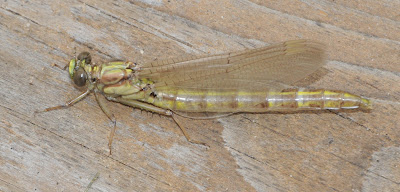
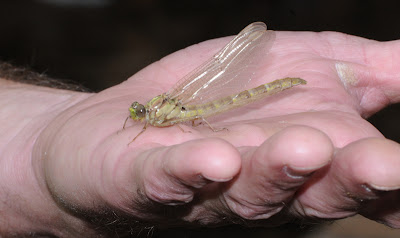

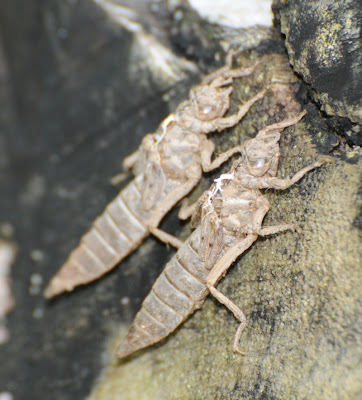





![Common Whitetail (Plathemis [Libellula] lydia) Common Whitetail (Plathemis [Libellula] lydia)](https://blogger.googleusercontent.com/img/b/R29vZ2xl/AVvXsEjAchVnfdy2esJh0DM6usJn1Jx4fo4QgXQlx2Afj_KNhSq_bqNwvLmJXJCJda-MaAQWYXxQRYKl_8I317XCsDvKs6ohXEyrvg3D5SRqXFSr2E_4VevgQ-KmXctGbyYfgJSEyjZxIps1AoQ/s400/Plathemis+%2528Libellula%2529+lydia+Common+Whitetail+DSC_4038.JPG)
![Common Whitetail (Plathemis [Libellula] lydia) Common Whitetail (Plathemis [Libellula] lydia)](https://blogger.googleusercontent.com/img/b/R29vZ2xl/AVvXsEgY5DMIpa3KaCACi5_lbHs0eowJjsyVE5cpTnI7h73F1SOnTtghp8MHASV_-jrsVCPgben_ja3KhSulBRqHKhK5X8q6_tBKvKiaBf1073BLgliSNnotSvBa-upFyVs3kgi_WpH8F0xzQ1k/s400/Plathemis+%2528Libellula%2529+lydia+Common+Whitetail+DSC_4034.JPG)
![Common Whitetail (Plathemis [Libellula] lydia) Common Whitetail (Plathemis [Libellula] lydia)](https://blogger.googleusercontent.com/img/b/R29vZ2xl/AVvXsEjHvntJvhOgazTQA9GoOs8TlG0z8gJZ3US8VGG7TcAog0fi7sojgqfSj4OFpQBGGzSjilr0wATum7MQvcp4fYGfseUArZbPk1OSgRxCm2K5X2kXIybOyIq_FSkTiICSfGOzphFt83pPi3c/s400/Plathemis+%2528Libellula%2529+lydia+Common+Whitetail+DSC_4008.JPG)
![Common Whitetail (Plathemis [Libellula] lydia) Common Whitetail (Plathemis [Libellula] lydia)](https://blogger.googleusercontent.com/img/b/R29vZ2xl/AVvXsEj2hSvgTyEm-iqshcBHqqy7NyM8iI-UBCWVEDOjClBh8MZa2F5XgWeLjqG-w1qWsUIdL-jHN-rzUpajdRG_WvA4hFtHiCwTjF0LGOjS2DRbfVmZbixKswlnQQc6SemHTUel1GqnsZtHziI/s400/Plathemis+%2528Libellula%2529+lydia+Common+Whitetail+j+DSC_3886.JPG)
![Common Whitetail (Plathemis [Libellula] lydia) Common Whitetail (Plathemis [Libellula] lydia)](https://blogger.googleusercontent.com/img/b/R29vZ2xl/AVvXsEhNdr202MsLwkygkxnzeR9jWokKNhcaFkcQ9iMgtxjJeVD9M85LIapJ-i4F5teFMlUiR81F-lgM6py1LomEA3KIsbj0UnJD_tUT65SNf2zxaPKbRFZFZFKbrTe5mU9W4t71GHZAHQpxTCU/s400/Plathemis+%2528Libellula%2529+lydia+Common+Whitetail+f+DSC_3874.JPG)


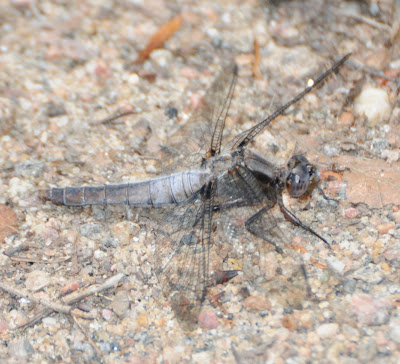
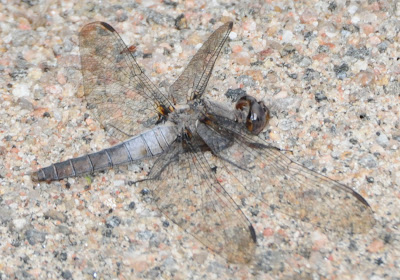
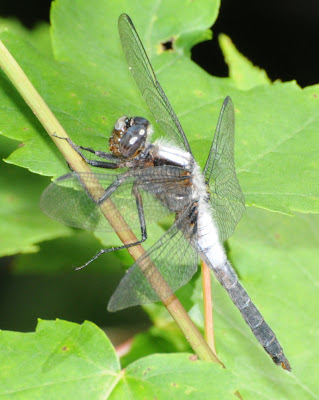










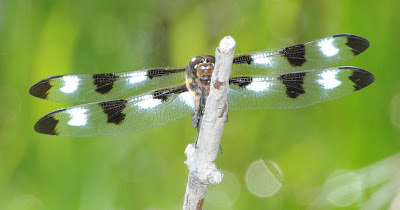










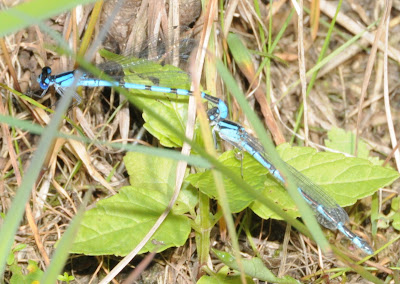







No comments:
Post a Comment